Obviously, there are many types of drinks around the world. Some are super popular as you can find them anywhere; some are local drinks affected by culture.
Drinks certainly play a significant part in various cuisines on Earth. In this post, I will show an overall picture of 21 kinds of beverages globally with other stories behind them.
So if you think drinks are just water, tea, or alcohol, you should not skip this article to widen your horizons about this seemingly familiar yet interesting topic.
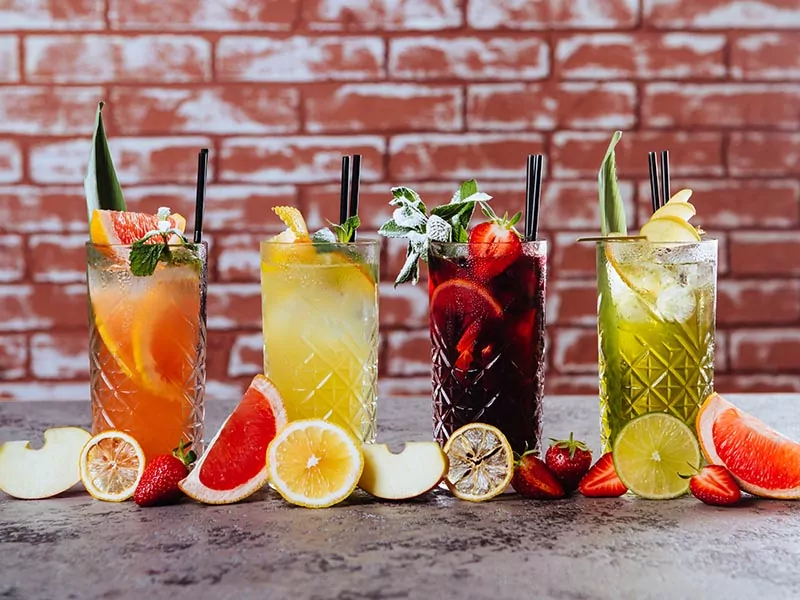
Brief Overview About Drink History
Drinks are an indispensable factor in keeping humans hydrated. No one can survive without drinks (e.g., water). Moreover, drinking has been a key part of human socialization from the first day, and alcoholic drinks were created in this manner.
As a whole, a drink can be very simple, like water, or requires several steps to prepare. There are 2 main types of beverages: Alcohol-free and Alcoholic drinks. Each class has other sub-drinks with different histories, characteristics, ingredients, tastes, and preparations.
Keep scrolling down to find out what they are!
Alcohol-Free Drinks
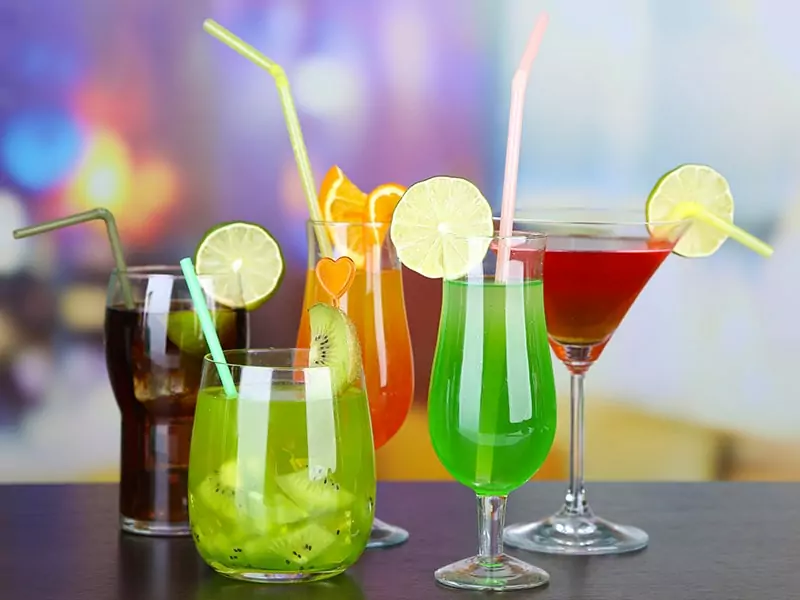
How many drinks without alcohol have you tried before? Hard to name, right? Let me show you 16 non-alcoholic beverages that are suitable for most ages.
Plant-based Beverages With Several Benefits
Plants are good sources for creating many types of drinks, either with or without alcohol. Some of them are perfect for people with diabetes or losing weight. Let’s start with one of the most popular drinks closely associated with humans’ lives for millennia.
1. Tea or Herbal Tea
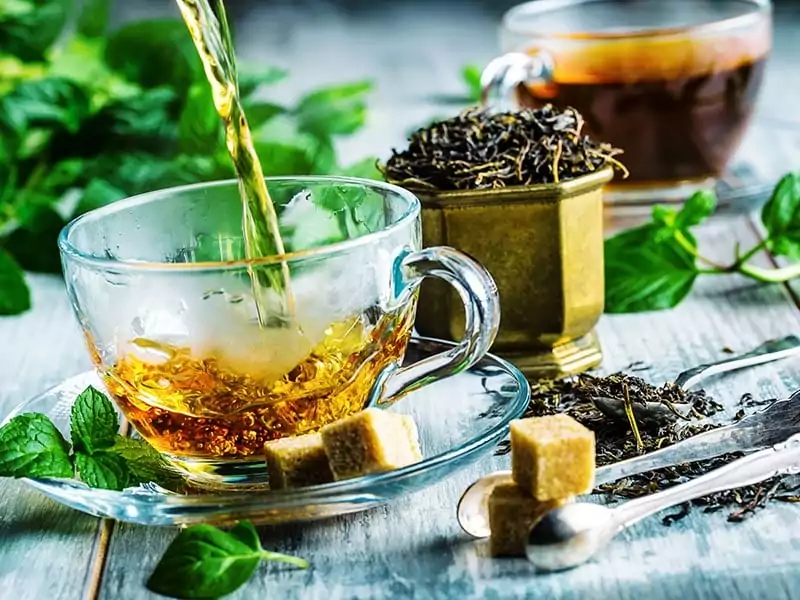
Tea plants (Camellia sinensis) originate in East Asia, especially in China, where people have known tea since 59 BC. Tea used to be consumed as a food instead of a beverage because Ancient Asians normally chewed them raw, or mixed them into their soup.
There are 3 terms to describe tea around the world. The first one is when tea was introduced to Western people in the 16th century under the term “chá”. Another tea term that became popular in the 17th century is “teh”, and the last one is “chai”, referring to spiced tea.
After harvesting leaves, they will process them in different ways to produce multiple types of tea. People divide tea into several groups based on how they process the plant, namely white, yellow, green, black, Oolong, and post-fermented tea.
The most basic way to drink tea is to pour boiling water into the tea so they can blend and create a hot cup of tea. You can mix your tea with milk, herbs, or spices. Moreover, different countries or cultures will have distinctive ways of making tea.
For example, matcha is a renowned drink in Japan made from green tea powder. Or Indians usually consume tea mixed with traditional herbs like basil, pepper, mint, or licorice. On the other hand, 80% of tea consumption in America is iced tea.
Overall, regular drinking tea can bring many benefits to your health, like increasing your immune system, lowering cholesterol, and reducing the risk of diabetes, heart disease, and even cancer.
Here is a very interesting history of tea.
2. Cereal-based Beverages
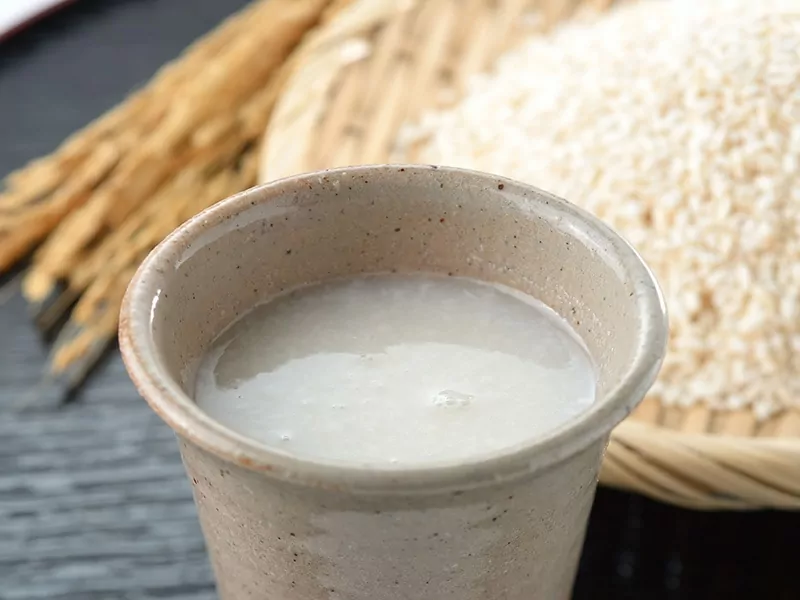
Several major types of cereal are familiar to the human diet, like barley, malt, rice, and maize. And they are all perfect ingredients to make drinks.
They can be fermented or unfermented drinks made from these cereals. For instance, Horchata is a famous drink in Mexico, and Puerto Rico. It is made from white rice and spices. In Japan, amazake is a traditional non-alcoholic drink made from rice with a light sweet flavor.
Or Champús is a favorite Peruvian beverage, or in Colombia, and Ecuador, which include maize, fruits, and seasonings. Various milk styles are made with these cereals, like barley milk and malted milk.
In general, the practice of using cereal to create a drink is popular globally. Cereal is packed with various nutrients like vitamins, minerals, antioxidants, and dietary fiber, so they can be a good supplement for your body.
However, the majority of fermented drinks with cereal are alcoholic beverages which I will discuss more in the next section.
3. Nut-based Milk
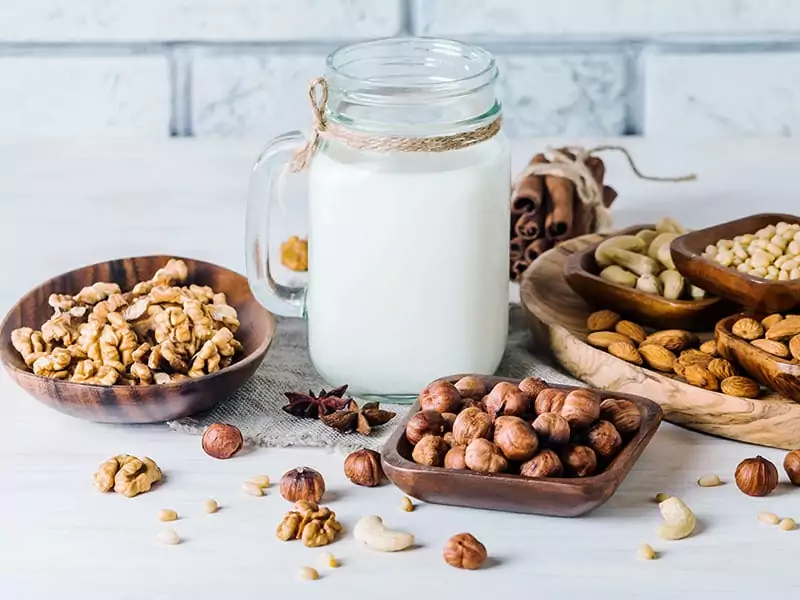
Nut milk is basically a drink made with nuts soaked in fresh water. Common nuts to make this milk type are walnut, almond, hazelnut, peanut, cashew, macadamia, etc.
The benefits of nut-based milk are massive. First, nuts are low in calories and contain many nutrients like vitamin E, D, dietary fiber, and calcium. They can be a good replacement for dairy milk if you are lactose intolerant.
Of course, different nut kinds will create different milk flavors, but I am sure you will love their creaminess. You can also find many kinds of nut milk in supermarkets or grocery stores; however, these commercial products might contain additional preservatives or sugar.
Therefore, if you have a bag of dried nuts at home and a blender, you can easily make various DIY nut milk. However, make sure you are not a nut-allergy before consuming these kinds of milk.
It is time to learn how to make 10 homemade nut milk with no effort.
4. Fruit Juices
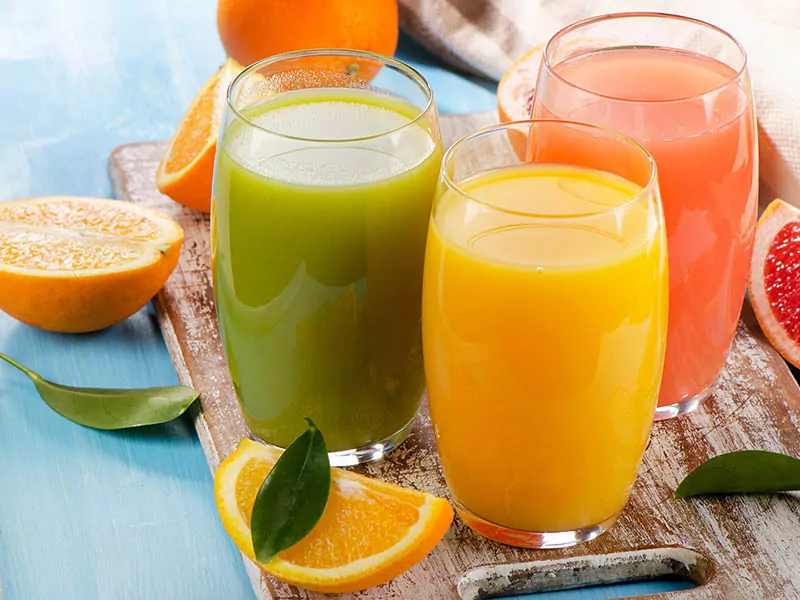
Fruit juice is a result of squeezing or extracting the pure liquid from the flesh of fruits without adding any sugar. Some juices are made from whole fruits, including their rinds. Popular fruit types to make juice are orange, apple, pineapple, grapes, pomegranates, etc.
A mixture of more than 1 fruit to make juice is also preferable. You can make these juices at home or buy ready-made ones in the supermarket. However, many commercial products included added sugar, flavoring, or additives.
The best thing about fruit juice is it can offer a high level of vitamin C, K, and other minerals beyond your expectations. For instance, cranberry juice – a recognized bright red juice with a tart taste, is truly a lifesaver if you have urinary tract infections.
On the other hand, many people prefer eating whole fruit rather than drinking their juice. Technically, it is not wrong, as juices have more concentrated calories and sugar than whole fruits. However, there is no significant downside to drinking fruit juice if you consume them right.
Children under 1-year-old should not drink fruit juice. Children from 4 to 6 can take 4 to 6-ounce fruit juice daily. Female adults can drink at least 1.5 cups of fruits per day, or more than 2 cups for males.
Fun fact: Coconut water is actually a juice type. They are also one of the best solutions for rehydration with various electrolytes.
5. Vegetable Juices
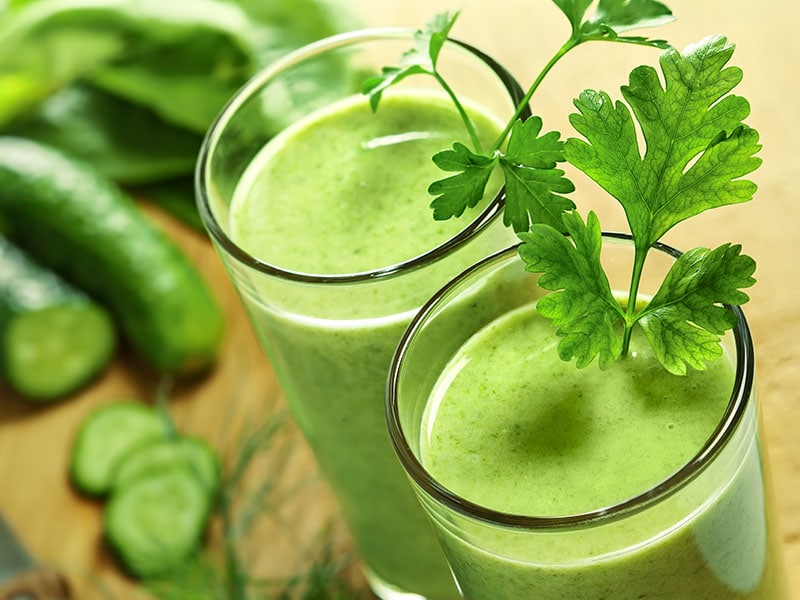
Next to fruit juice is another nutritious drink from vegetables. Indeed, the way vegetable juice can improve your health is as good as fruit juice can, or even better. Vegetables are low in calories, so they are better for weight watchers than fruit juice.
The best veggies for juicing are kale, beets, cucumber, carrots, spinach, tomatoes, etc. The nutrient density mostly depends on what veggies you choose, but overall, they are huge sources of minerals, vitamins, and antioxidants.
Drinking vegetable juices helps you live better. They can protect your heart, keep you away from many chronic diseases and diabetes, promote brain health, and even be a good friend for your skin and hair.
Choosing a suitable juicer kind is important to ensure the final result. And you can enjoy these juices for breakfast, mid-day snack, or dinner; they are all perfectly helpful for your diet plans. Plus, drinking vegetable juice is a great way to detox your body.
Why juicing? Check here for more information about the health advantage of juices.
6. Cacao or Chocolate
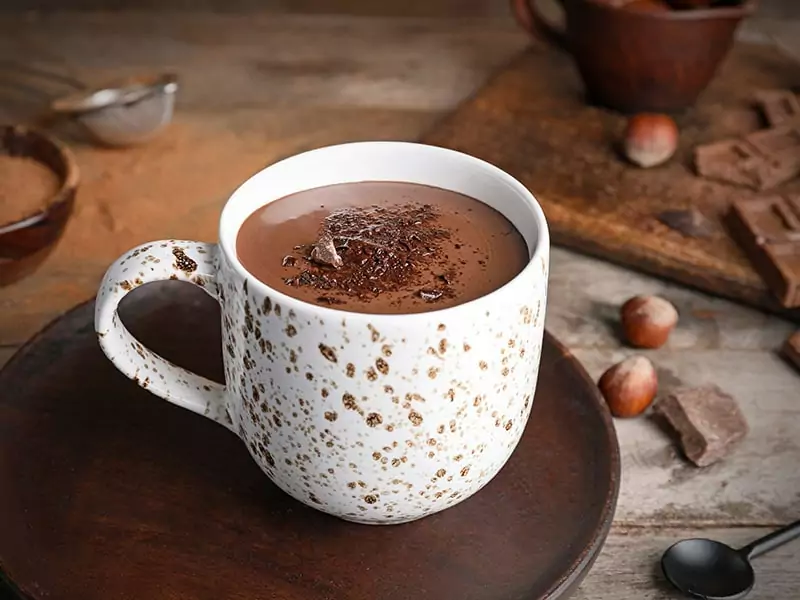
Drinks made from cocoa powder (or melted chocolate) are another good option for non-alcoholic drinks with certain nutrients. Do you know cacao powder is rich in flavonoids, a compound that can limit the risk of diabetes, control your blood pressure, and reduce stress? Yes, they are!
Many chocolate variants are made from cacao beans; their nutrients are the same. But for the healthiest option, you should choose pure cacao and mix it with hot water (or milk) to create these beverages.
You can add a bit of sugar or honey to increase the sweetness, or if you want your cup of hot chocolate full of flavor, sprinkle a pinch of spices like cinnamon, nutmeg, clove, anise, etc. They will give a nice kick in your mouth and tummy as well.
Moreover, cacao (or chocolate) drinks are best served hot. Take a sip; you can feel their relative thick consistency along with their rich, creamy, and sweet flavor.
7. Coffee
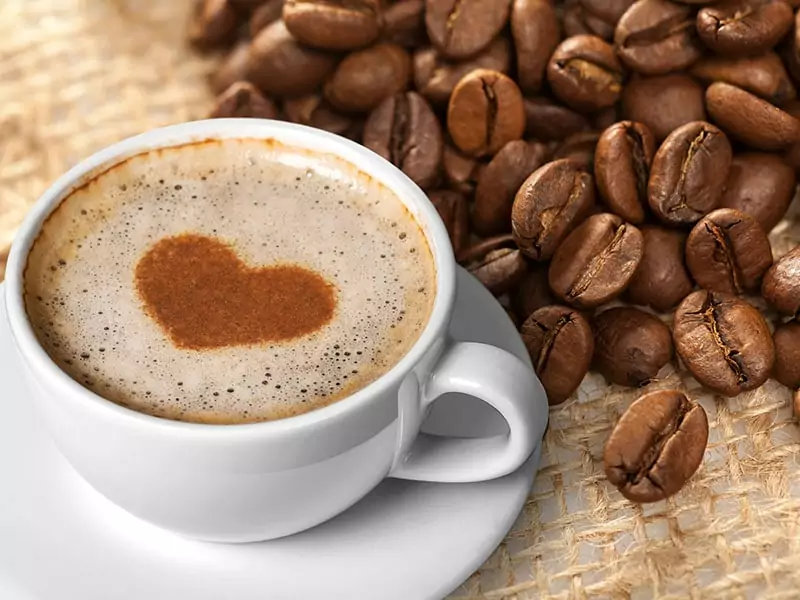
The history of drinking coffee can trace back to Yemen in the mid-15th century. Then their popularity spread to other places like India, the Middle East, Africa, Europe, and Southeast Asia. And today, coffee is one of the most popular drinks all over the world.
There is no big difference between how coffee was processed in the past and now. First, people need to roast the coffee beans – a fruit of the coffee plant, then grind them into fine particles. Coffee is usually served hot, but iced coffee is also well-loved.
But the way people drink coffee might differ by country, as some places are more favorable in brewed coffee, while others prefer instant coffee. But either way, coffee is a dark-colored drink with a distinctive flavor.
High-quality coffee has a pleasant aroma with a mixed flavor of sweetness, acidity, and bitterness. Add sugar, milk, or cream to lessen this flavor if you cannot cope with its bitterness.
There are more than 70 countries that cultivate coffee plants, but the biggest ones are Brazil, Vietnam, and Colombia, respectively. And the 2 most widely-grown coffee types are C. robusta and C. arabica.
The health benefits of coffee are impressive as it can regulate your blood sugar level, promote weight loss, and help you stay focused better. But do not drink them before your bedtime because they can cause insomnia due to the caffeine content.
This lively introduction will tell you more about coffee.
Other Popular Non-alcoholic Drinks
The list of non-alcoholic drinks keeps going on with the other 9 common beverages. What are they, and how do they become people’s favorites? Scrolling down the page for more detail!
8. Water
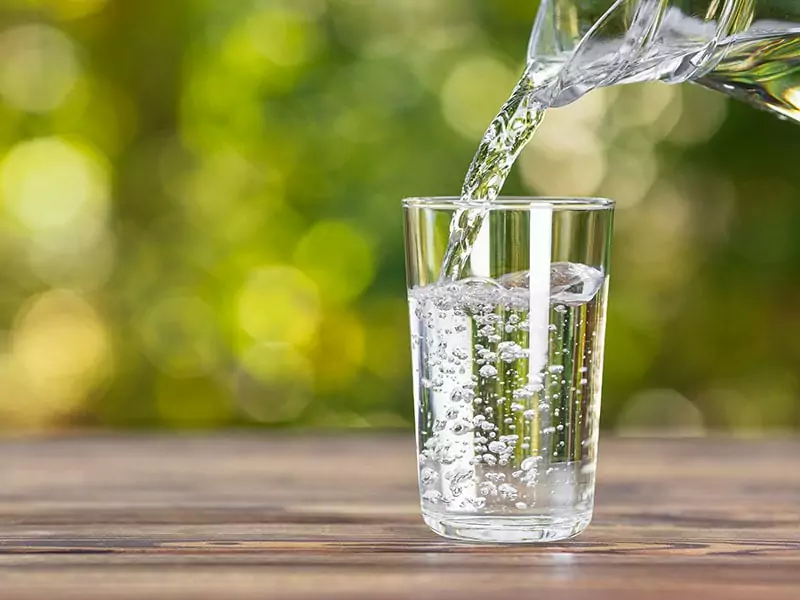
There is no doubt water is the most consumed and important drink of all types. Water includes 2 elements: Hydrogen and Oxygen, so its chemical name is H2O.
60% of the human body is water; therefore, they are the top choice to stay hydrated. The popular-used water types are mineral water (aka spring water), tap water, sparkling water, and flavored water.
However, please remember that not all countries are safe to consume tap water, so opting for sealed water bottles is a better choice to prevent any disease relating to drinking unclean tap water, like diarrhea.
A good example, in this case, is mineral water. They can provide various minerals like magnesium, calcium, zinc, and more, making them a more expensive choice for buying water.
Water is also an essential ingredient in other drinks, like juices, plant-based milk, alcoholic beverages, etc.
9. Soft Drinks
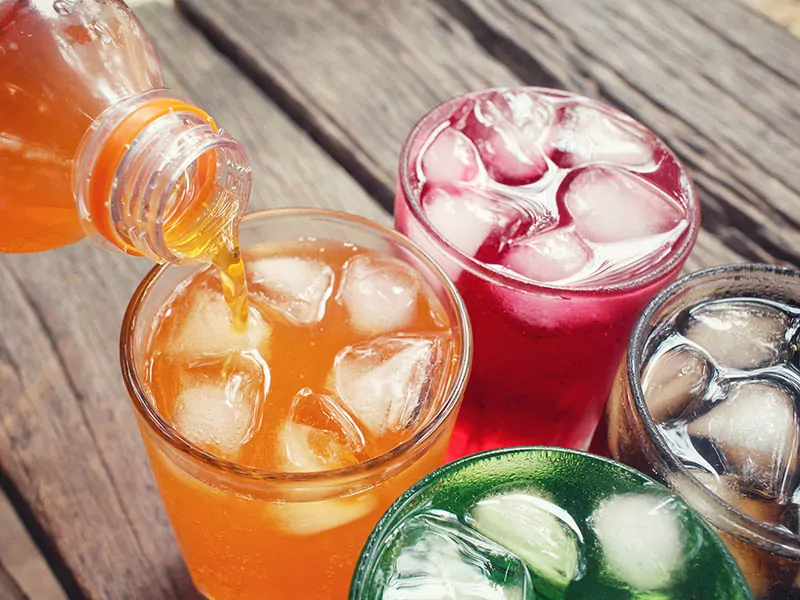
Soft drink is an umbrella term for sweet drinks, including water, sweetener (e.g., sugar, fruit juice, corn syrup, etc.), and natural (and/or non-natural) flavorings.
Some soft drink products also consist of colorings, caffeine, and preservatives. There are many big soft drink brands like Coca-cola, Pepsi, 7UP, Fanta, Sprite, etc.
The flavors of soft drinks are numerous, so you can have a lot of options to choose from. They are available in many package types, like glass bottles, plastic bottles, or cans. And you can easily spot them in many places, from restaurants to cinemas, from supermarkets to groceries.
Sadly, consuming too many soft drinks lead to some dental problems. First, the carbohydrates such as fructose, glucose, etc., can negatively impact tooth enamel, resulting in tooth decay or other dental caries.
Other studies found soft drink lovers can face lower bone density and a high risk of having kidney stones. Therefore, if you want to drink these beverages, ensure you consume them appropriately.
You might want to alter your drinking habit, especially with soft drinks, after checking this demonstration.
10. Dairy Milk and Other Dairy-based Drinks
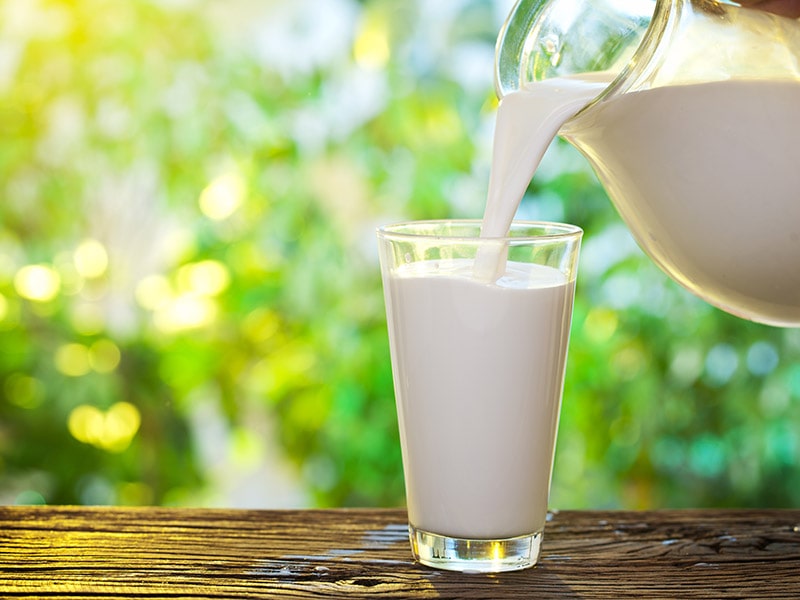
Dairy milk is a food source from animals like cows, sheep, goats, or cattle. Milk consists of many nutrients, like protein, vitamins, minerals, and lactose. Drinking dairy milk can support you in maintaining a healthy weight and bone structure thanks to the high amount of calcium.
Several types of milk have several characteristics. For example, full-fat milk might contain many calories, or skim milk would be better if you prefer a less-fat and less-calorie version. Some types come in powdered form (powdered milk) with better durability.
People use milk to create other drinks, like yogurt-based drinks (made from fermented milk). Or you can prepare a milkshake with other ingredients, flavorings, and added sugar. Their versatility in cooking is huge because various cheese kinds, pudding, baked goods, etc., contain milk.
However, they are also not suitable for lactose intolerance as milk can lead to diarrhea, nausea, or abdominal pain.
11. Mocktails
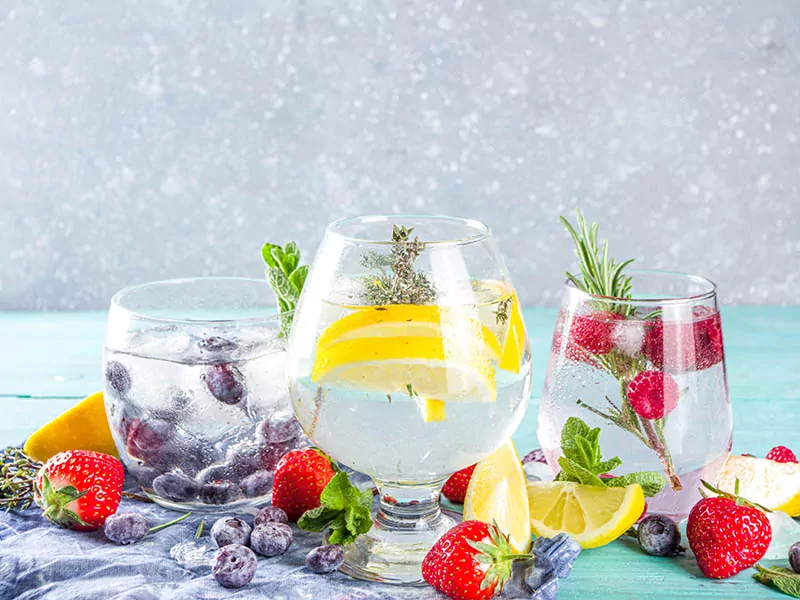
Mocktails are perfect drinks for ladies at parties or festivals since they are non-alcoholic beverages. They are a combination of fruit juice, soda, cream, syrup (or other sweeteners), herbs, and spices.
As a whole, a mocktail is ideal for you if you cannot drink cocktails (alcoholic drinks) yet still enjoy the festive vibe at any party or gathering. There is no age limitation for drinking mocktails, and they are even safe for pregnant women.
They can be a perfect drink to ease dehydration since some mocktail recipes use coconut water or sparkling mineral water to create. The nutrients in mocktail are pretty good, thanks to the spices, herbs, or fruit juice you use.
And since they contain no alcohol, mocktail is more favored among Muslims. You can order them in many restaurants, bars, or make them at home with ease.
Making a mocktail at home is a fun activity.
12. Smoothies
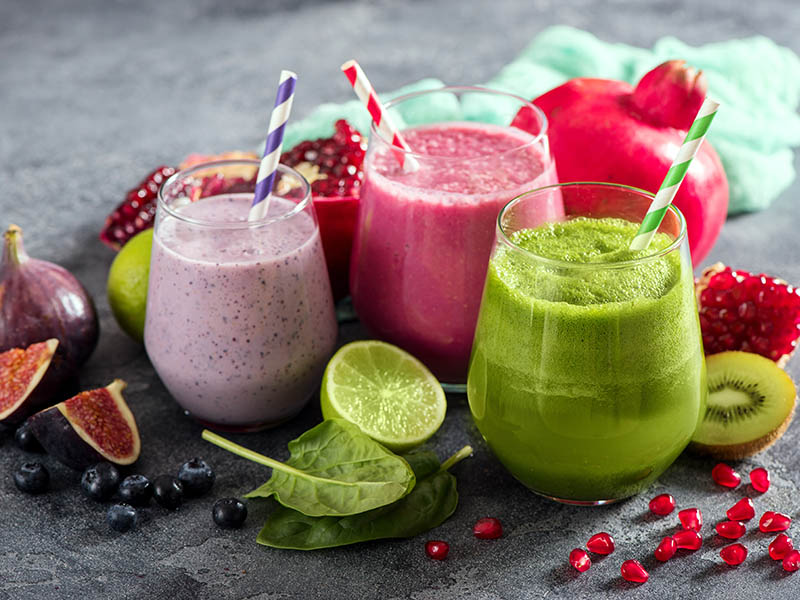
Smoothie (aka smoothy) combines fruit juice, vegetables, dairy foods (like milk, ice cream, cheese, or yogurt), and other components.
Therefore, the healthy benefit of smoothies mostly relies on what ingredient you choose to make them. Some of them might increase your weight since they contain a high amount of sugar, while others would be better, like green smoothies with many veggies.
You will need a high-quality blender for green smoothies to pure all ingredients together. You can even add protein powder to increase the protein supplement for daily intake. Overall, there are many ways to make your own favorite smoothies.
Many people mistake smoothies with milkshakes, but if you look closer, smoothies are thicker and might be creamier due to the greater amount of milk, yogurt, or ice cream.
However, in the Indian drink list, Lassi can be either milkshake or smoothie, which is made from yogurt, water, and spices.
13. Energy Drinks
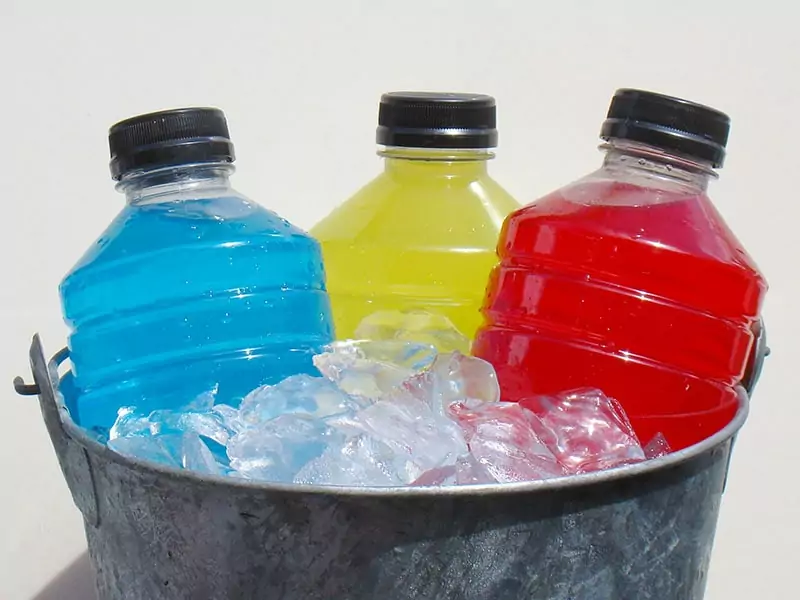
As the name suggests, the main aim of energy drinks is to support your energy with their stimulant caffeine. But it does not mean coffee and tea (both contain caffeine), or some caffeine-added soft drinks are energy drinks.
In fact, they might (or might not) be carbonated beverages, and they might have sugar, taurine, sweeteners, and amino acids. The main effect of energy drinks is to increase your concentration and reaction speed, making them a common choice for busy workers.
On the other hand, young students in high school or college can consume them for the same purpose: increasing alertness. The most famous brands of these drinks are Monsted and Red Bull.
However, the healthy concern about energy drinks raises due to their high caffeine level. For safety consumption, 400 mg of caffeine daily is safe for adults. If you use a greater amount, you can suffer symptoms like nervousness, sleeplessness, and fast heart beating.
This expert’s explanation will give you a full view of energy drinks.
14. Sparkling Water
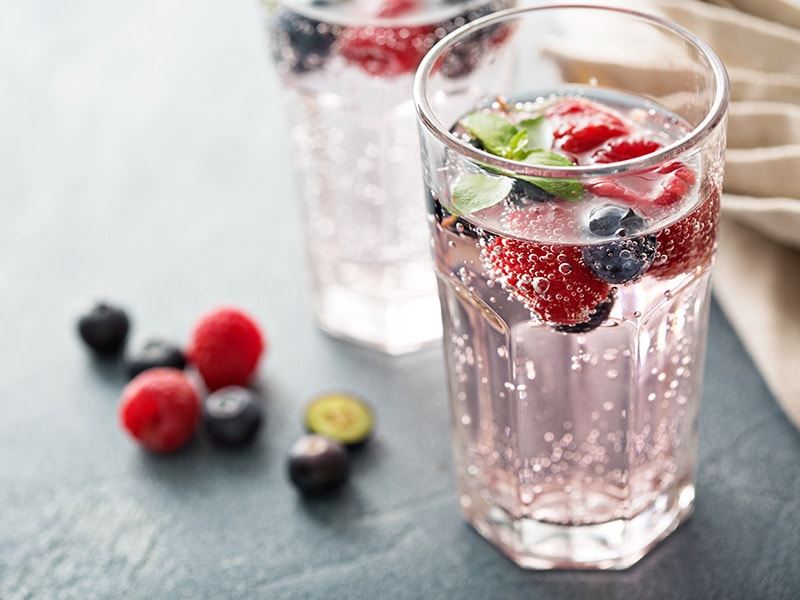
Sparkling water is carbonated water. The carbonation creates many small bubbles in these drinks. And this carbonation process can be natural (e.g., sparkling mineral water) or artificial (e.g., soda).
The method for infusing water with carbon dioxide appeared in the 18th century, and it was the invention of Joseph Priestley.
Generally speaking, sparkling water is a healthier alternative for soft drinks with a high sugar amount and even better than soda since they do not contain sugar or calories. Moreover, it will not damage your tooth enamel.
Another advantage of this beverage is its ability to improve digestion and bowel movements. Sparkling water can even improve your swallow ability. And if you want to lose weight, this drink is an excellent choice.
15. Soda
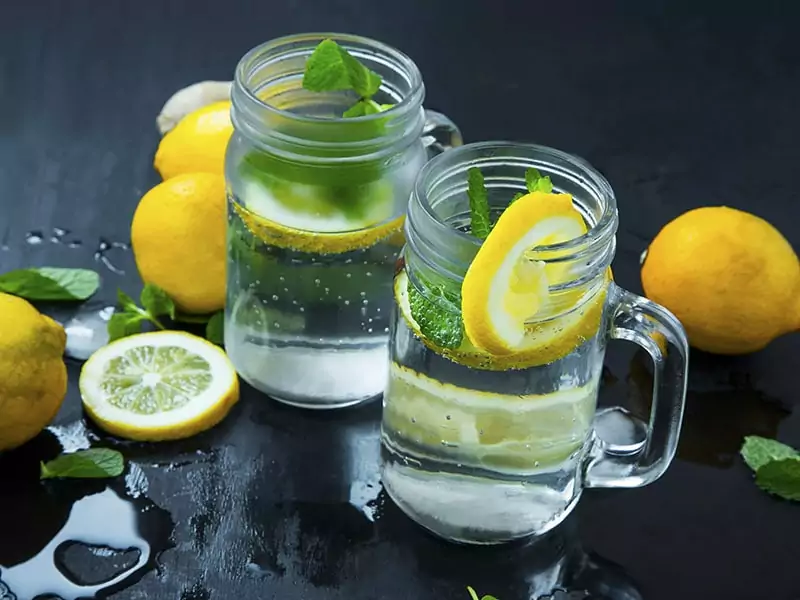
Soda (or soda water) and sparkling water share a similar mineral presence. However, soda is not naturally carbonated. They become carbonated beverages after adding other minerals and carbon dioxide (CO2) gas into soda.
Besides, they can be sweet due to additional sweetened agents, such as corn syrup, cane sugar, or other artificial sweeteners.
The popular one is club soda which contains potassium bicarbonate, sodium citrate, sodium bicarbonate, etc. People normally use club soda as a drink mixer in their cocktails or other mixed beverages.
Diet soda is also common if you look for a healthier solution for losing weight rather than normal soda. Overall, they are a form of carbonated water that you can easily buy in bottles in groceries and supermarkets.
A healthier replacement for soda is here, so do not miss them!
16. Tonic Water
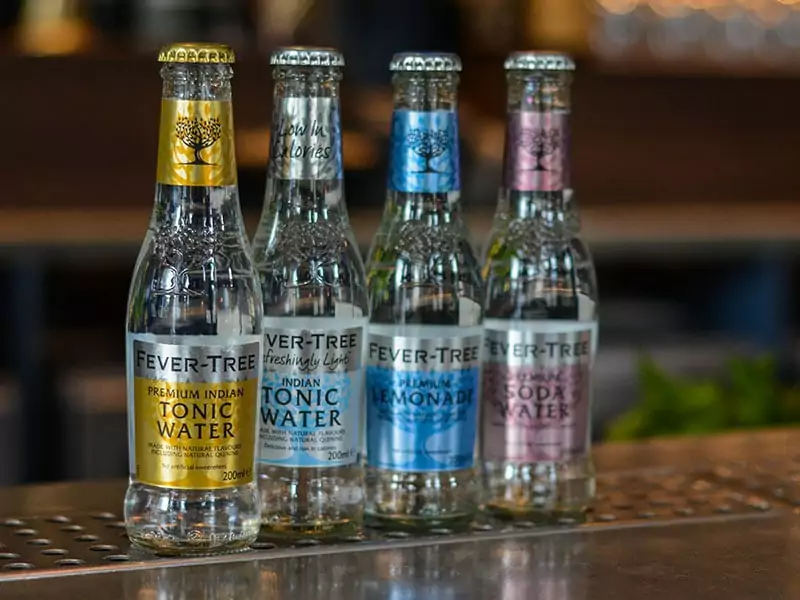
Tonic water is basically a carbonated soft drink including high-fructose corn syrup (or sugar), water, quinine, and often flavoring (such as citrus flavors). And the quinine content is the main ingredient creating the bitter and dry taste of tonic water.
The initial commercial tonic water appeared in 1858 by Pitt & Co. Humans often mix this type of soda water with other drinks to create cocktails, particularly gin and tonic or vodka tonic.
However, do not assume tonic water and soda water are the same things since tonic has quinine, while soda does not. Plus, the flavor of tonic water is more bitter and distinct than soda.
Let’s talk a bit about the history of this drink. From the 17th century, Spanish people found a way to use Cinchona tree bark to create quinine for medicinal purposes (to treat malaria).
Until the 19th century, Indian and British mixed quinine with soda and sugar to lessen the bitterness. And that’s how people create tonic water.
Alcoholic Drinks
Human and drinking alcohol cultures have existed for thousands of years. There are 3 types of alcohol: isopropanol, methanol, and ethanol. But only ethanol (aka alcohol) is the safe type for human consumption.
There are 2 smaller categories of alcoholic drinks, namely Undistilled and distilled beverages. In this section, you will learn how to recognize these 2 types with several examples.
What Are Undistilled Alcoholics?
Undistilled alcoholics use the fermentation process, where bacteria or yeast convert starches and sugar in the ingredients (mostly plants) to ethanol. And these drinks are less pure and have lower alcohol strength.
Below are 3 significant examples of undistilled alcoholic drinks, including beer, wine, and cider. You might drink all of these types before, but you might not know the stories behind them. So read on to not miss anything!
17. Beer
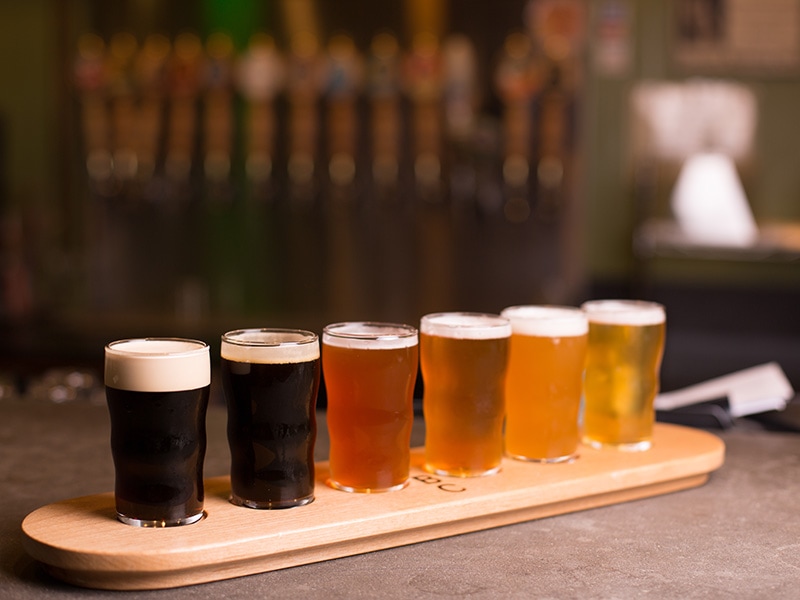
One of the oldest alcoholic beverages must be beer, and they are also in the top 3 most consumed drinks around the world, just after water and tea. So why are they so well-loved like this?
Let’s trace their origin. The first evidence of beer was recorded around 13,000 years ago in Israel. In ancient Egypt and Iraq, people considered beer a formation of civilizations. And until now, they are an indispensable drink on many special occasions.
Beer includes some basic ingredients like water, yeast, malt, and hops as a flavoring. The process of making beer is brewing to convert starchy components into sugary liquid (wort), then humans convert this liquid (wort) into beer with fermented stage by yeast.
The typical alcohol level in beer is around 4 to 6%, but some low-alcohol beer might be less than 3% alcohol by volume (ABV). There are many beer varieties, and Belgium, England, Germany, and the Czech Republic have produced many famous local beers.
Beer flavor can vary, depending on the grains and how people roast them. Generally speaking, they can be sweet, bitter, bready, or even sour with some light hints of fruits (e.g., raisins or figs). Their color is also different by malt type. Some might be dark; some are lighter in color.
You can buy beer anywhere. Most beers are sold in bottles or cans. Interestingly, the nutrients in B are quite high, including potassium, magnesium, and various B vitamins. Consuming a small quantity of beer per day can lower the risk of heart disease and diabetes.
Wait, what? A 1,100-year-old beer? Is it a real thing? Check here to find out!
18. Wine
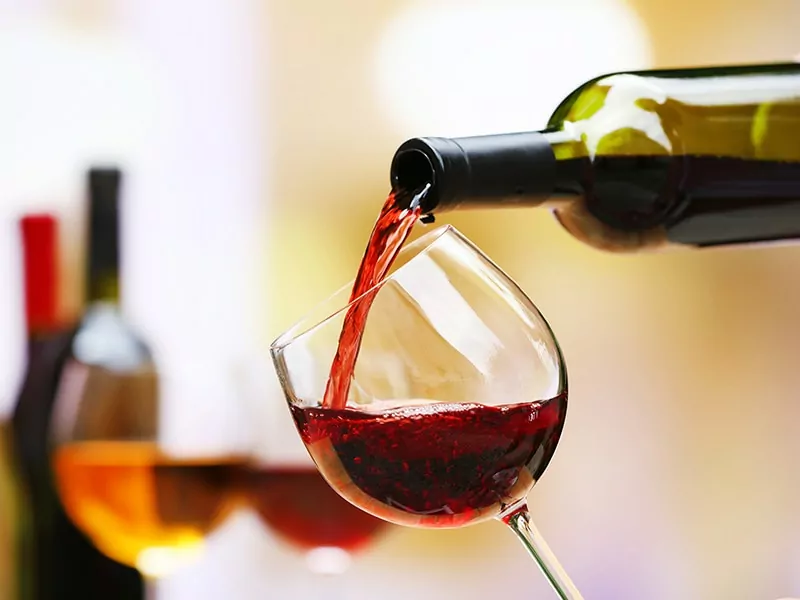
Wine is another fermented drink created from various grape species. Yeast is also an essential component in converting the sugar content in grapes into carbon and ethanol. And different grape varieties and yeast strains result in other wine styles.
In general, there are 2 main styles of wine: white and red wine. And you can find other choices in red wine varieties. People also use other fruits to make wine like cherry, elderberry, plum, pomegranate, and currant.
Humans started to consume wine in Georgia in 6,000 BC. Some evidence shows ancient Chinese used a mixture of grape and rice to make a fermented drink. And today, consuming wine spreads worldwide and has a certain impact on their cultures.
The biggest wine producer is Italy, with more than 4 million liters per year, followed are France, Spain, and the United States. Europe also accounts for the highest wine consumption per capita annually.
Besides drinking them as a beverage, people use wine for cooking as well, such as stew. Drinking an appropriate amount of wine (less than 1 drink for females and 2 drinks for males per day) has many good impacts on your health.
Indeed, wine decreases the chances of stroke, heart problems, diabetes, or even limits premature death. But if you drink more than this amount, it leads to several risks relating to your heart health and blood pressure.
If you are curious about how people make wine, you definitely want to check this documentary.
19. Cider
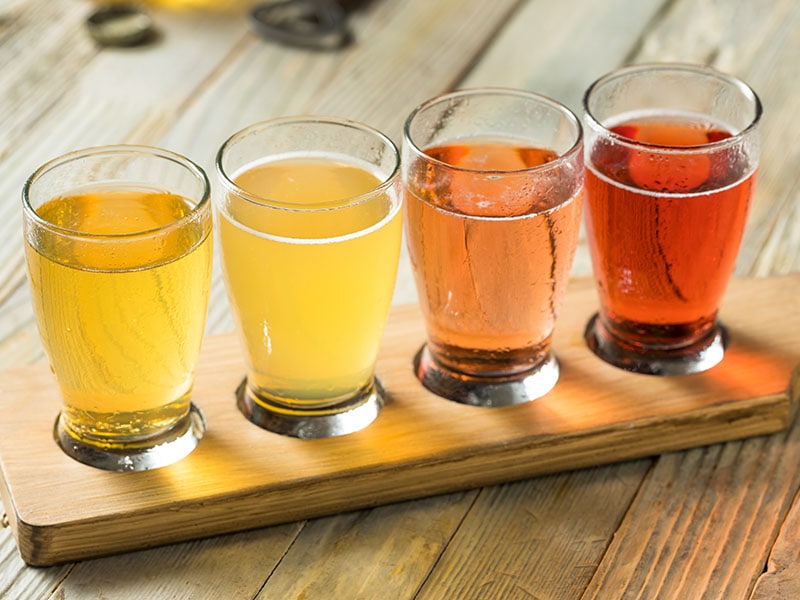
If your favorite fruit is apple, cider might be the ideal beverage for you as they are a result of fermented apple juice with yeast and other flavorings. This beverage is well-received in Canada, New Zealand, India, Australia, the UK, Ireland, and other Commonwealth countries.
The usage of many apple varieties results in various cider flavors and colors. The best apple species to make this drink is cider apples, or crab apples. Some modern ciders use culinary apples to make this, namely Fuji, Gala, Golden Delicious, etc.
Additionally, some cider might come in colorless, brown, or amber. The alcohol content in cider varies from 1.2 to 8.5% ABV., but some places, like South West of England, produce strong cider that can be up to 12% ABV.
The key flavor compound in cider is tannin, which creates drying bitterness and astringency. This alcoholic beverage also contains polyphenol – a compound that can work like antioxidants with various health benefits.
If you find a beverage called perry, this is a fermented pear juice – a similar version of apple. In reality, cider and perry are available at most festivals in Britain. And if these drinks go through the distillation process, cider becomes fruit brandy with stronger alcohol content.
What Are Distilled Beverages?
Distilled alcohols, including liquor (aka spirits), are products of the distillation from wine or other fermented substances (e.g., plants, fruits, veggies, or sugar) that have been brewed before, so the final distilled liquid can have a higher concentration of alcohol.
That’s why they are also called hard liquor since the alcoholic content in these drinks is higher than undistilled beverages like beer, wine, and cider.
20. Hard Liquor (Or Spirit)
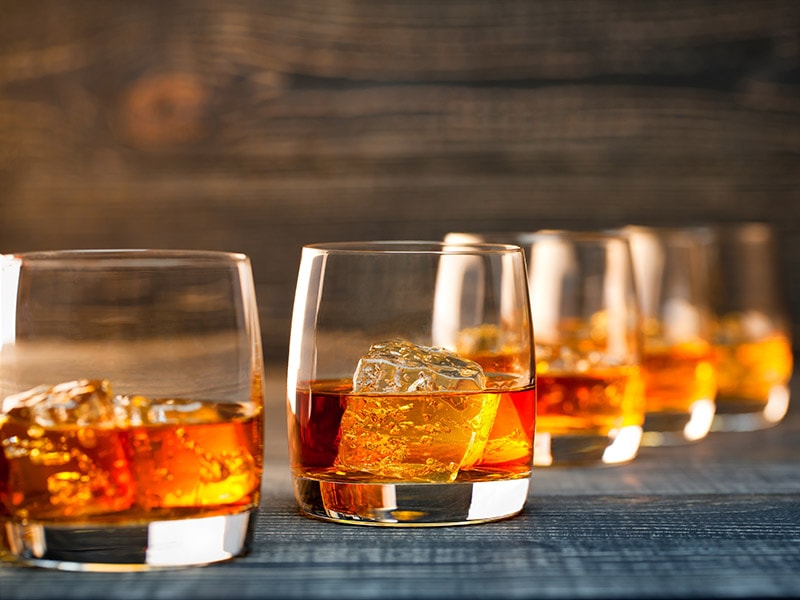
Liquor, spirits, or hard liquor refers to the same thing with stronger alcoholic content. You can simply understand that they go through at least 2 procedures. The first step is fermentation and the second one is distillation.
The liquid is more concentrated during the distillation process, so the alcohol by volume can increase. In North America, they use “hard liquor” to differentiate from other undistilled alcohols, while spirits are preferable in the United Kingdom.
Overall, several factors can affect the final result, such as the quality of ingredients (grains or fruits), yeast, water, the temperature that people use to produce the drink, or how long these liquids are in the barrel.
With a huge number of liquor varieties, the most popular ones are gin, rum, whiskey, vodka, brandy, and tequila. Serving liquor varies as you can enjoy them alone (neat) at room temperature to sense the strong aromantic of this drink.
Another common way is serving over ice cubes (on the rocks) or mixing them with other ingredients to create cocktails, which I will explain soon.
However, as they are strong drinks, overdrinking them might lead to several problems like alcohol intoxication, poisoning, and even death.
Let’s dig into hard liquor 101 here with a lot of helpful information!
21. Cocktails
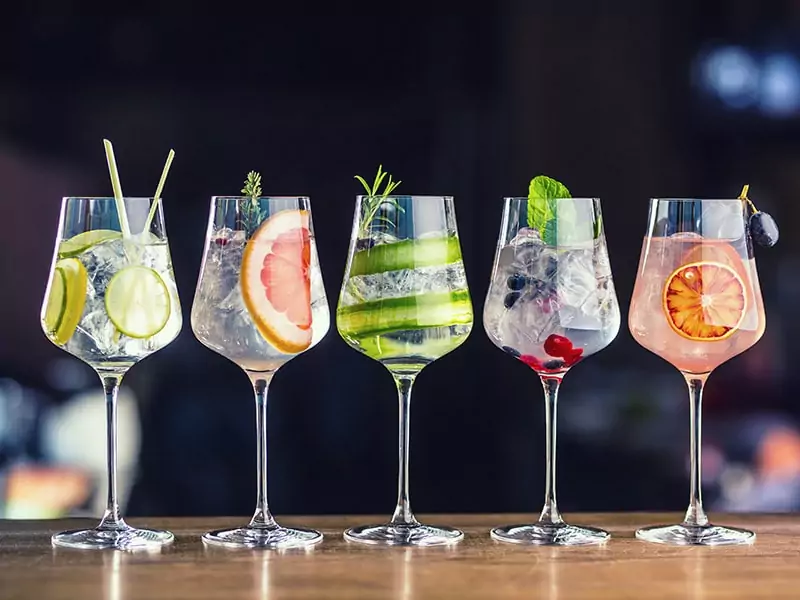
Cocktails include 1 or more distilled liquors (spirits) mixed with fruit juice, flavoring agents (like spice, honey, cream, or syrup), and garnishments. Cocktails can be low-alcohol or high-alcohol based on their ABV. And sweet cocktails are easier to drink.
There are a variety of popular cocktails worldwide. They contain beer, wine, or liqueur (sweetened alcoholic drinks made from spirits and other flavorings like herbs, fruits, sugar, and spices).
So if they have a beer as the base component, this beverage is referred to as a beer cocktail. You can find numerous types of cocktails around the world, and they are different from country to country, or based on the bartenders.
Worldwide famous cocktails are Mojito, Martini, or Manhattan. Or, if you are interested in enjoying apple juice with vodka, it is also simple to make at home. There are some beautiful flaming cocktails with flame on the top that you can order in many restaurants or bars.
People usually serve this drink in a cocktail glass (for straight-up cocktails made with shaken/stirred ice but then served without ice) or in a highball glass (for highball cocktails made from a small amount of alcohol and a big amount of alcohol-free mixer).
Do Alcoholic Drinks Affect Your Body or Mood?
If you are a casual drinker, you have nothing to worry about the effect of alcohol on your body and brain. But if you drink them too much, you should pay more attention to your health because alcoholic drinks can:
- Lower the immune system.
- Negatively affects your heart health (irregular heartbeat, increased blood pressure, heart muscle drops, or even stroke).
- Make you cannot think straight, change your mood and behavior.
- Result in liver issues like cirrhosis, steatosis, fibrosis, or liver cancer.
- Lead to head, neck, colorectal cancer if you are a heavy drinker.
In contrast, if you drink them reasonably, they can trigger positive emotions like comforting or relaxation, enhancing your good mood.
Are alcohols totally harmful? This detailed explanation could give you the correct answer.
Drinks For Better Sleeps
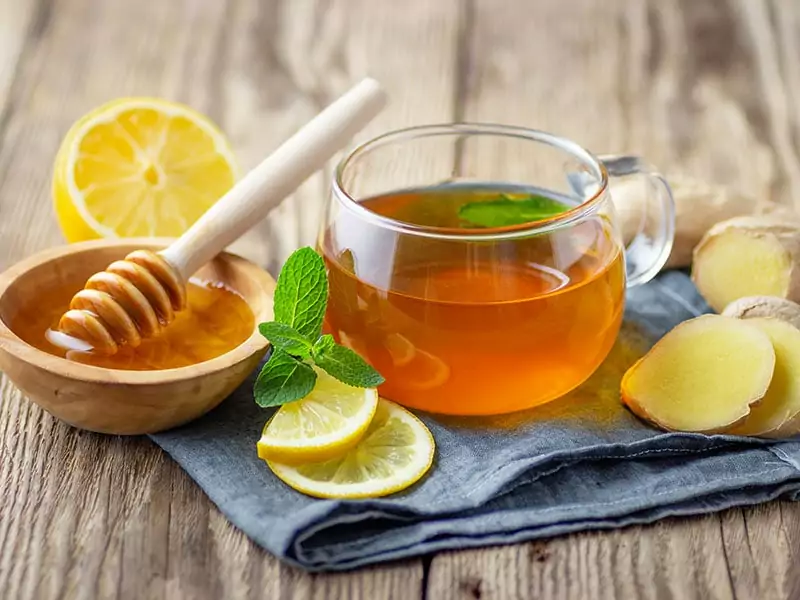
A term to describe good drinks for bedtime is the nightcap. Technically, they are not a type of drink; they are just a group of beverages that can induce sleep.
The traditional nightcaps might be liqueurs, bourbon, or brandy. However, most of today’s nightcaps are alcoholic-free drinks with calming and relaxing components. For example, a cup of warm milk or warm tea with honey can improve your sleep quality.
Here are some quality sleep drink brands you can consider, such as Ovaltine, Som Sleep, Nighttime Tea, Sleep Well Milk, and more.
Top-Trending Beverages In The World Currently
Besides many famous drinks like beer, wine, tea, the beverage industry is witnessing changes in consumer behavior toward buying drinks. Below are 2 trendy beverages that you should not miss.
Bubble Tea (or Boba)
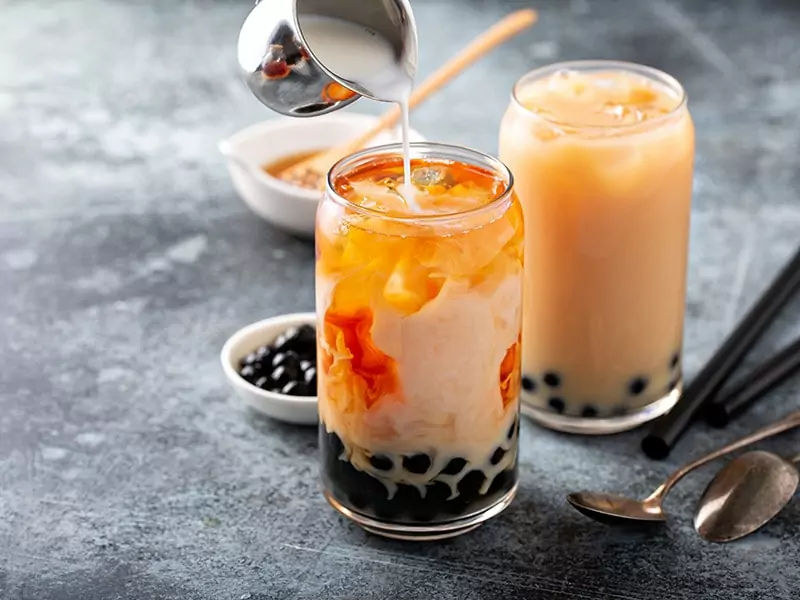
A very beloved drink among adolescents is bubble tea (aka boba). This drink originated in Taiwan in the early 1980 and is now a phenomenon globally. But why?
Bubble tea is famous for accompanying chewy balls (or pearls) made from tapioca flour. Their flavors vary based on their varieties. But there 2 main bubble tea types are milk tea with black pearl and milk tea with green pearl.
Check here to see how bubble tea can affect your health.
Alcohol-Free Beer, Spirit, and Cocktails
The skyrocketing consumption of non-alcoholic drinks currently might derive from the health-conscious among people.
It is clear to see that there are significant health impacts of alcoholic items if you drink them in greater amounts. Therefore, beverage manufacturers have to constantly develop their product line by making low or non-alcoholic beer, liquor, and cocktails to meet consumers’ demands.
The Importance of Pairing Drinks with Foods
Matching some kinds of foods and drinks is not a new concept in culinary. In reality, drinks can act as a perfect companion to your dishes.
Their flavors can contrast or complement the food taste, but the main purpose of pairing them together is to provide you with the most enjoyable meal. In this circumstance, wine and beer seem to be ideal drinks for certain foods.
These are some basic rules for pairing food with alcoholic beverages that you should know.
Wine and Foods
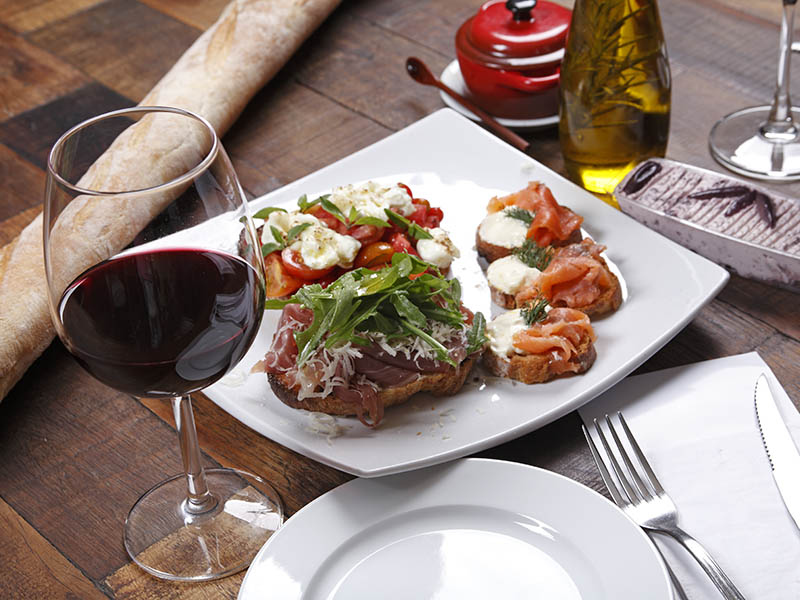
Many wine styles can make your food shine. The tannin in wines features a bitter flavor, making them go well with many red meat dishes to offset the protein and fat in your food. In contrast, the meat can reduce the tannin’s bitterness.
For example, there are many top-rated wines to go with fondue – a delicacy made from different Swiss cheese kinds or other cheeses.
Or you can pair Merlot, Pinot Noir, or Cabernet Sauvignon with other delectable and fulfilling dishes made with various meat kinds. If you are a fan of pasta, serve it with Chardonnay wine.
In a lot of dessert styles, dessert wines are ideal drinks to improve the overall quality of your sweet treats. They can be red or white wine, but make sure that this dessert wine is not sweeter than its pairing dessert.
Beer With Foods, Why Not?
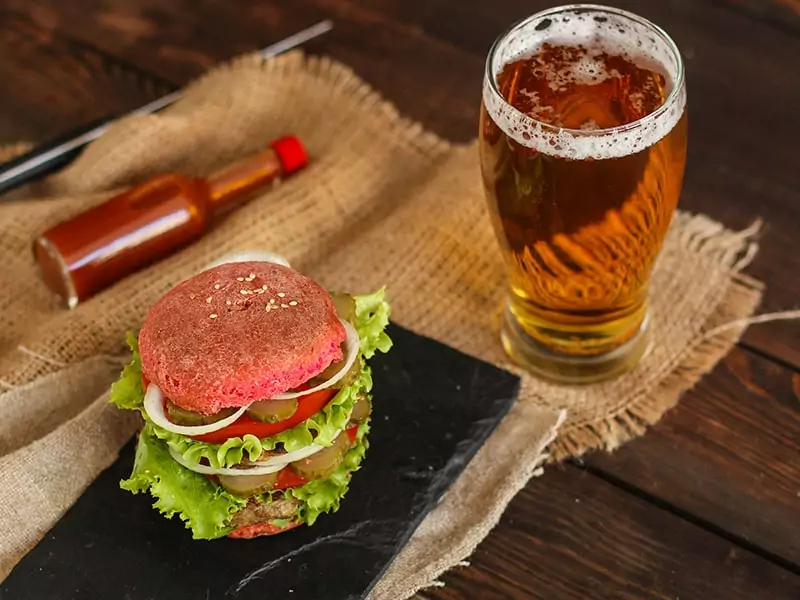
Another alcoholic drink that many love to have on their dining table is beer. There are several beer types with different colors, flavors, and alcohol volumes.
But generally, the umami notes from malt (the main ingredient of beer) can perk up the flavor of many dishes, from grilled meat to soups or stews.
Some small-scale brewed beer, like craft beer and its various varieties, can pair well with cheeses, pizzas, hamburgers, cured meat, chips, and more.
And Other Drinks That Can Light Up Your Dishes
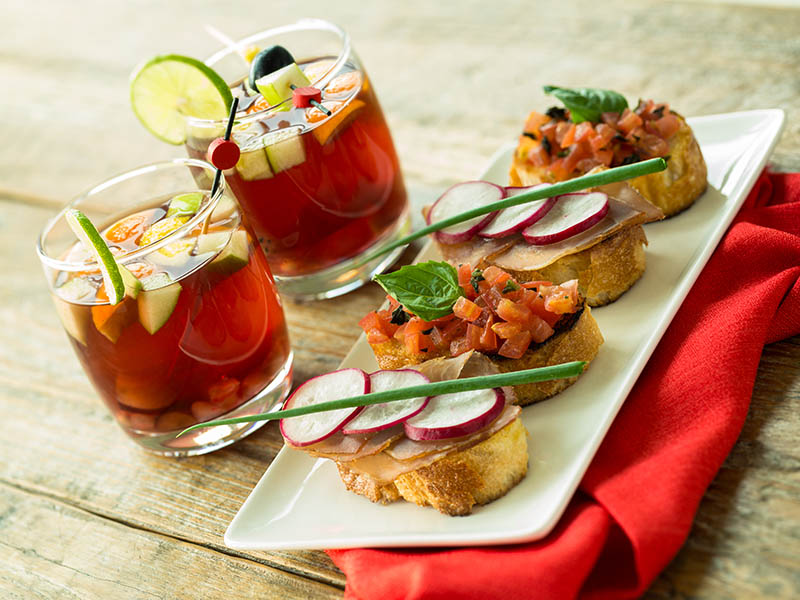
The cocktail is another perfect beverage to go well with food. Indeed, there are a thousand cocktail recipes that can balance the flavor profiles of your meal. The acidity, herbaceous, and floral notes in these drinks can offset the fat in food.
Cocktails are also the face of many cuisines. For instance, a glass of Margaritas is an excellent pair for Mexican dishes (e.g., tacos). But keep in mind, these cocktails’ alcohol levels should be appropriate not to ruin your dining experience.
On the other hand, some non-alcoholic drinks like soft drinks or sparkling beverages are prominent in many savory dishes to bring up their flavor.
Drink – A Significant Part In Humans’ Lives And Cuisine
No one can refuse the importance of beverages in our lives as they are one of the most significant sources to maintain health, such as milk, tea, juice, etc. In addition, the appearance of tea, coffee, or alcoholic drinks is seemingly a culture in different countries.
With all the above information, I hope you can gain sufficient knowledge regarding these amazing drinks. So if you find them useful for your preference, please rate them below, or share this article with your beloved people.
Or in case you still have other concerns or questions, do not hesitate to leave your idea in the comment section. Thank you for your support!
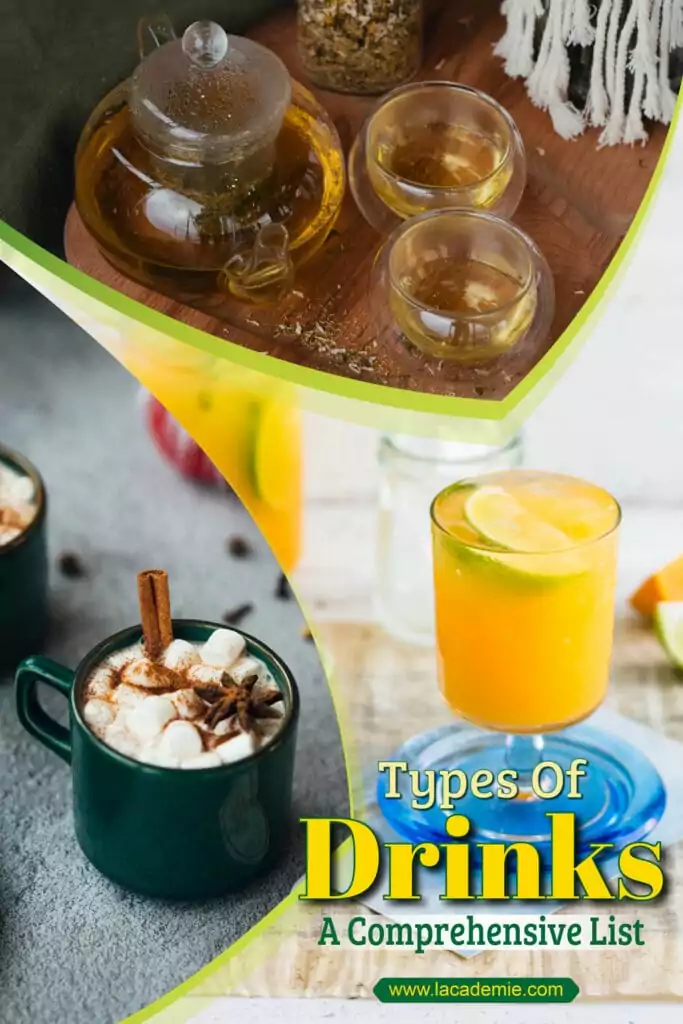


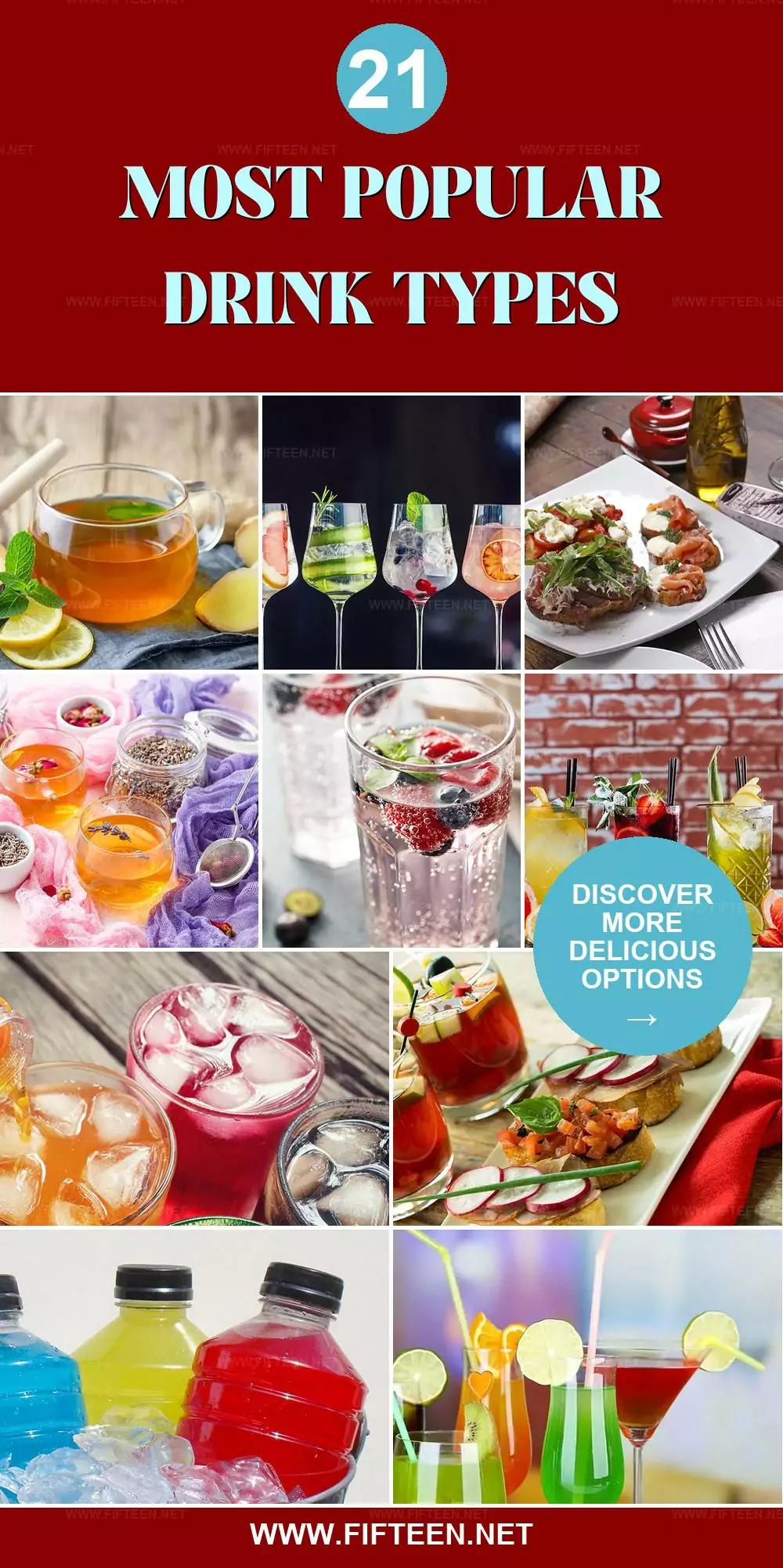
Truc Tran (Kris)
Senior Content Writer
Expertise
Home Cooking, Meal Planning, Recipe Development, Baking and Pastry, Food Editor, Cooking-video Maker, Asian Food Content Creator, Vietnamese Food Evaluation Expert
Education
TasTAFE, Australia
Kendall College (Australia Branch in Sydney)
HNAAu School (Vietnam, International Joint Training Program)
Kris, also known as Truc Tran, is a seasoned food writer and editor. She loves exploring all kinds of foods, from quick street foods to fancy restaurant dishes. In her writing, she brings together different tastes, cooking methods, and traditions of cuisines, showing how each culture’s food or drink is unique. On Fifteen.net, Kris shares her deep knowledge, especially about Asian food and traditional meals from across the globe.